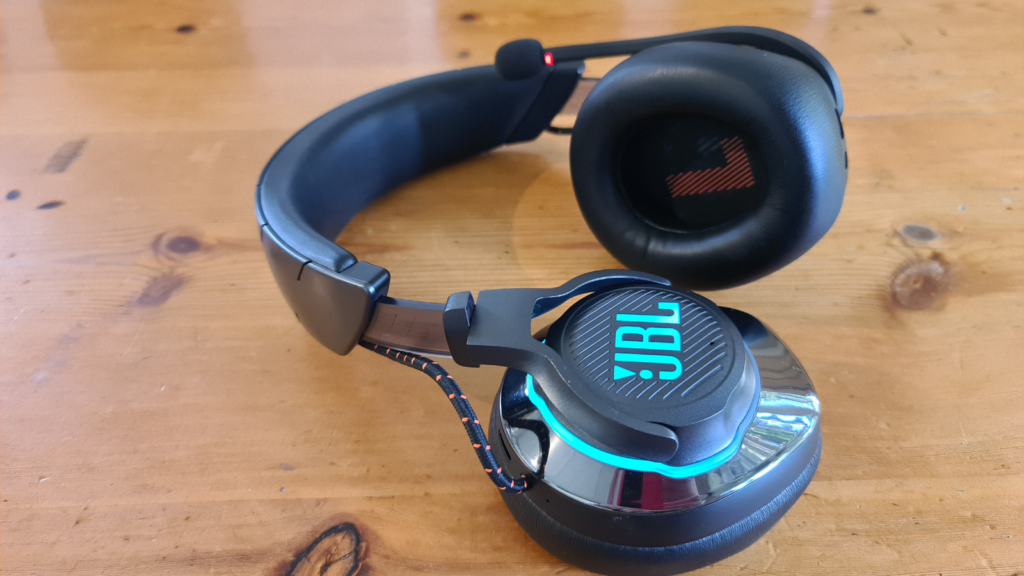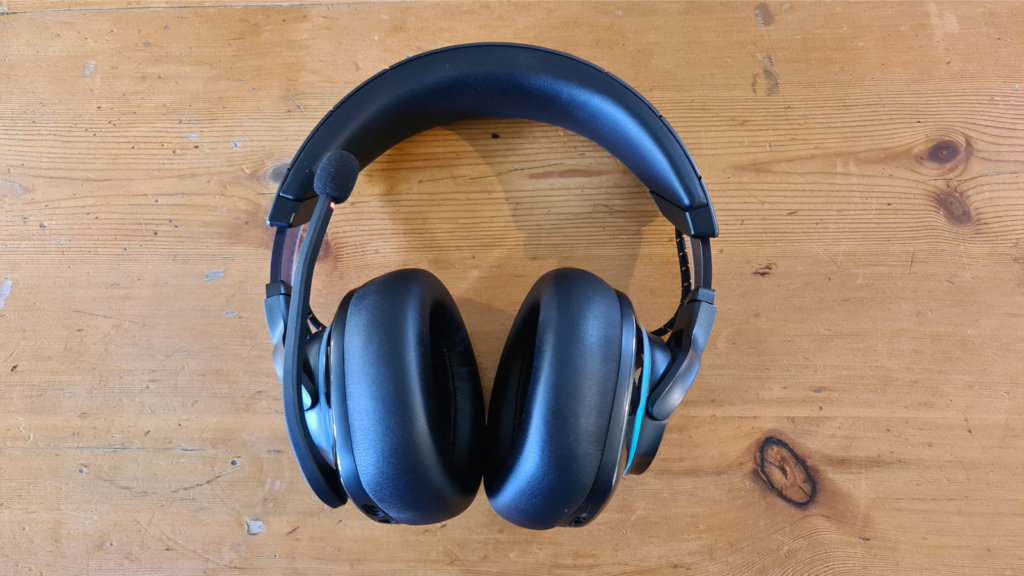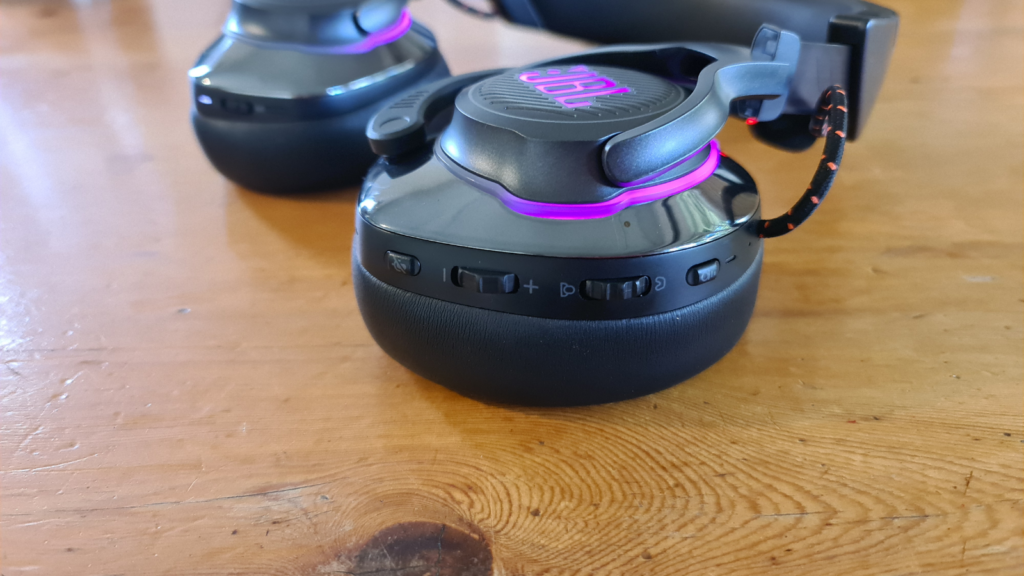The Quantum 800 brings a lot to the table, as it should for the price. But it seems like, for every feature it offers, there is a slight caveat to it. Overall, this is an okay headset that is just a few tweaks away from offering a lot, given the price tag.
-
Design
-
Build quality
-
Sound
-
Features
We were expecting a little more from the JBL Quantum 800, considering it falls under the Harmon brand. This is JBL’s first foray into the gaming headset market and while it isn’t particularly bad, there is plenty it can improve.
To start off with, the R3,800 price is rather high but JBL does a fairly good job of giving you your money’s worth in terms of features. You get active noise cancellation (not something included in most gaming headsets), EQ options and spatial audio (called JBLQuantumSound) enabled through the software and a dedicated physical volume wheel to adjust the levels between voice chat and game audio.
And make no mistake, this is certainly for gamers. You are welcome to use them in the office but they’re a little cumbersome, the mic isn’t detachable and the RGB doesn’t have a very professional air to it, so make of that what you will.
A standard build
The construction is one of the weak points due to the fact that it’s mostly plastic. The shiny metallic-looking part is a big fingerprint magnet but if it’s sitting on your head, this likely won’t be a problem for you. While the foam earcups and headband are comfortable enough in short bursts, the clamping force and weight might cause some strain after a while.
It does mean, though, that you get pretty good passive noise isolation just from the fit. This is a closed-back over-ear headset. That means they aren’t very breathable. Expect your ears to get noticeably hotter after a few hours of wearing them, especially if you want to get active and jump about or whatnot.
The controls are split up over the two ear cups but tend more to the left. You get a dedicated mic mute button and a master volume wheel. You get another volume wheel that controls the level of your voice chat app (Discord or TeamSpeak) and whatever you’re playing. This is a cool feature but the controls are a little too close together so you’ll end up using the wrong wheel a lot.
Make a connection
When it comes to connectivity, you have a few options. These offer 2.4GHz wireless connectivity with the included dongle or you can forego the dongle and connect with Bluetooth v5.0 if your device supports it. They are rechargeable via USB Type-C but once you’ve drained them you’ll need to plug in an additional 3.5mm TRRS cable to use them. The included cable isn’t the longest so best to avoid this scenario. This is a bit disappointing especially since other wireless headsets can be used while charging.
Battery life is nothing to write home about. They’ll last about 14 hours if you make every effort to ensure that. If you don’t, you’re looking at closer to 8 hours but your results may vary. A full charge takes about 2 hours, which is certainly on the quick side.
Having said that, we did notice a difference in microphone quality between using them plugged in and wireless. Plugging them in offers better vocal clarity than wireless. Also a pity. Over a wireless connection, the mic sounds like you’d expect a gaming headset mic to sound. Your voice lacks depth and fullness but is good enough for shouting at your trash teammates. The swivel up to mute function is a nice touch but you also get a mute button which is a little puzzling.
If you’re pairing these with a console and not a PC then you’re free to use the dongle with a PlayStation but for some reason, you’re limited to the cable with an Xbox. Using a console won’t give you access to the software features like EQ, spatial audio or RGB so keep that in mind.
A feature we were quite fond of was connecting two devices at the same time. Wirelessly with the dongle to a PC and via Bluetooth to our smartphone. You can have audio from both devices play at the same time. Obviously, this doesn’t sound very good but makes switching between them easy.
Listen here
As for the sound, the main function of a headset, these get the job done. You’ll get a pair of 50mm neodymium drivers pushing the sound into your ear holes. The bass and treble accuracy is noticeably lacking. The overemphasised lower end makes for thumpy, boomy sounds. This is highlighted by the lack of clarity and uneven treble response. On the other hand, the mid response is very neutral and flat making vocals or lead instruments stand out.
Overall, they’re fine for casual music listening, especially if you’re a bass head, and explosions in games will have an extra kick. If JBL can provide a more neutral, flat sound on its next attempt and leave the bass boosting to the user, they could have a really good offering in the gaming headset market.
JBL Quantum 800 verdict
The Quantum 800 brings a lot to the table, as it should for the price. But it seems like for every feature it offers, there is a slight caveat to it. The advertised 14-hour battery life might seem good but you will need to turn features off to get that; when it’s flat you will need to plug in two cables to use them. Overall, this is an okay headset that is just a few tweaks away from offering a lot, given the price tag.
The JBL Quantum 800 is available from Incredible Connection for R3,800.





